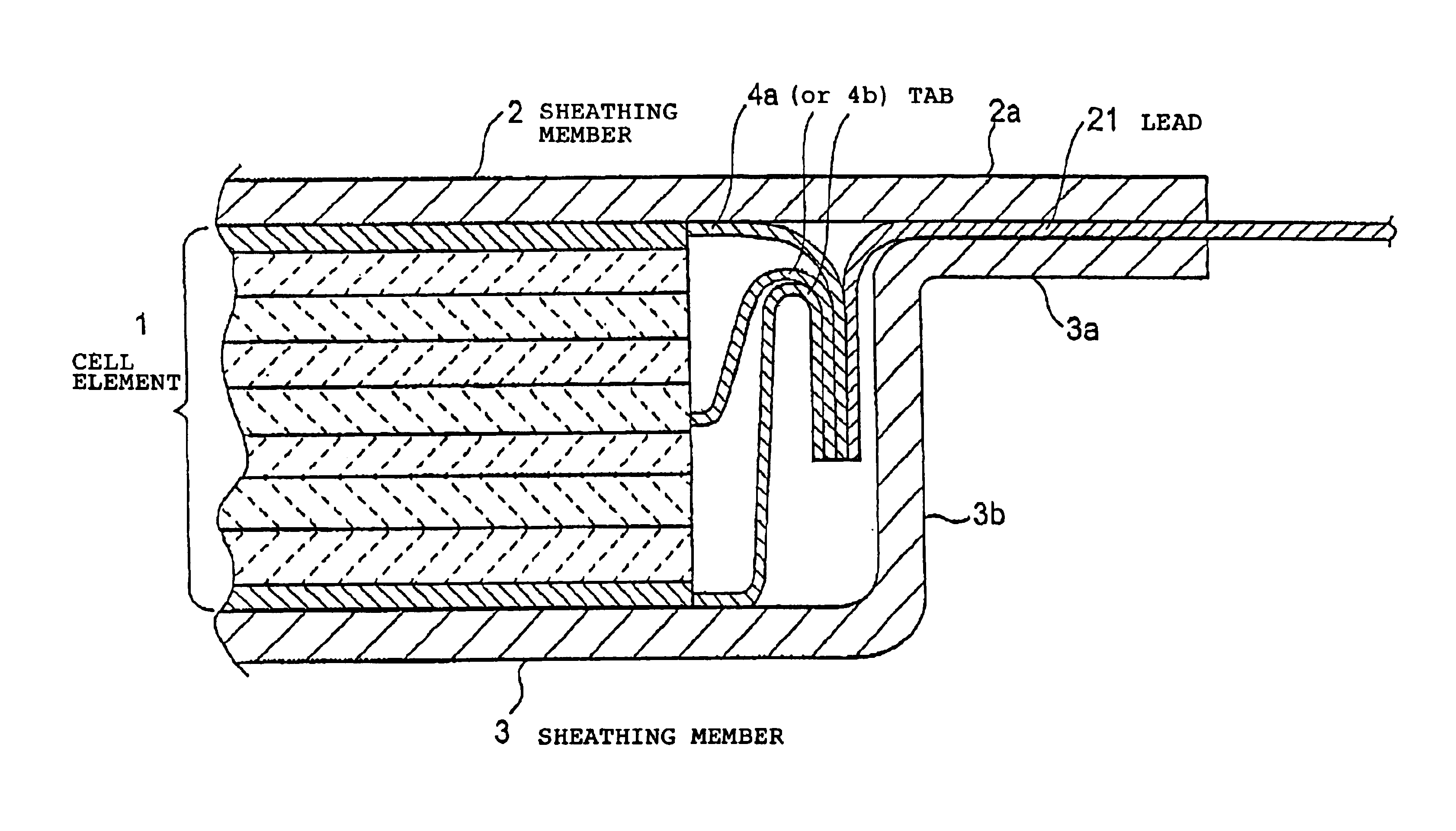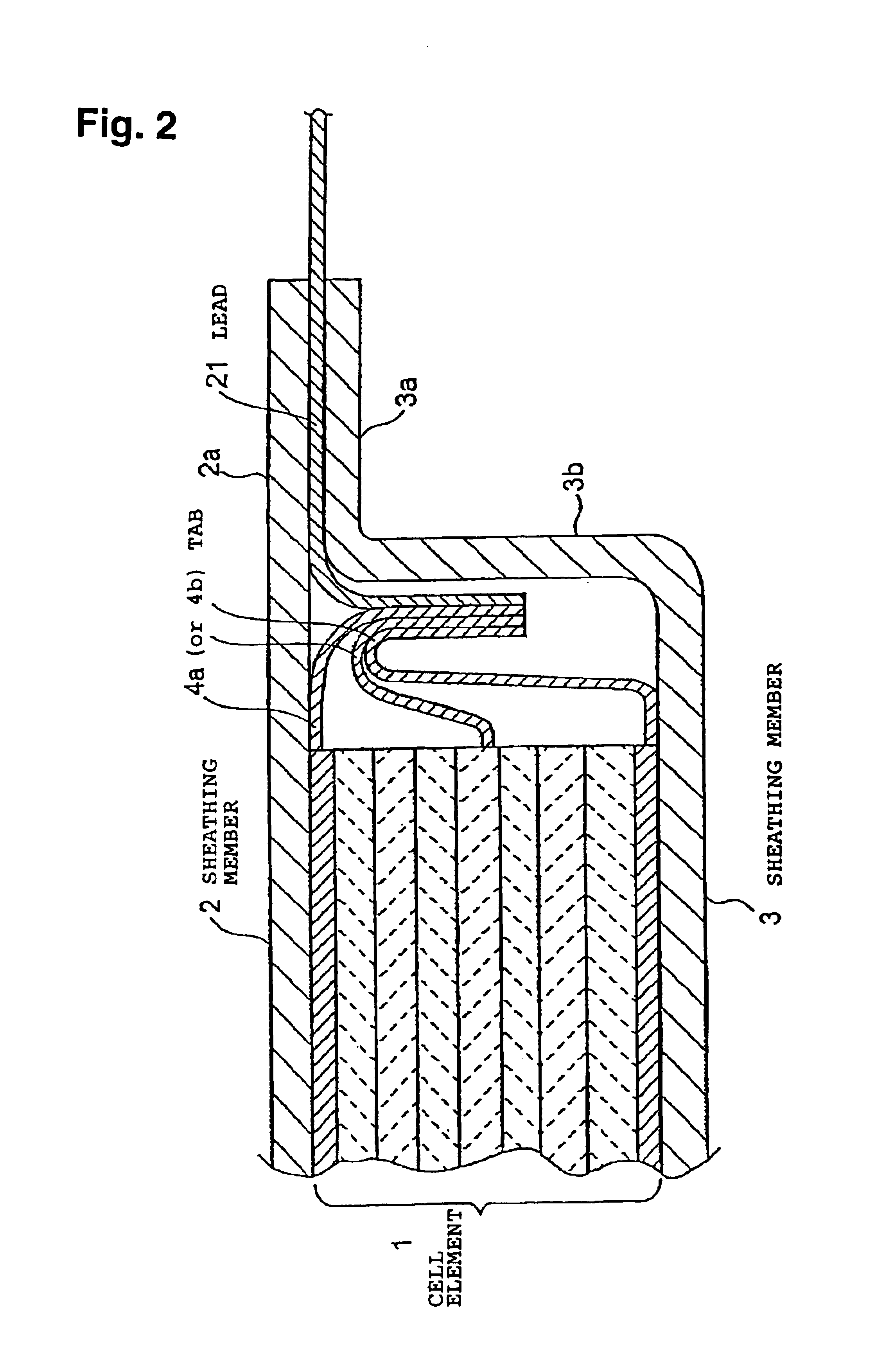Lithium secondary cell
a secondary cell and lithium technology, applied in secondary cell servicing/maintenance, cell components, jackets/cases materials, etc., can solve the problems of high cell temperature, high cell temperature, and high cell temperature, so as to reduce the specific surface area, the effect of high reactivity
- Summary
- Abstract
- Description
- Claims
- Application Information
AI Technical Summary
Benefits of technology
Problems solved by technology
Method used
Image
Examples
example 1
Production of a Positive Electrode
[0185]90 Parts of a lithium-nickel compound oxide having a part of nickel sites substituted by cobalt and aluminum (LiαNiXCoYAlZO2 (α=1.02, X=0.82, Y=0.15, Z=0.03)) (specific surface area: 0.4 m2 / g, average secondary particle size: 10 μm), 5 parts of acetylene black, 5 parts of polyvinylidene fluoride and 80 parts of N-methyl-2-pyrrolidone were kneaded by a kneading machine for 2 hours to form positive electrode coating material 1.
[0186]Then, the positive electrode coating material 1 was coated on an aluminum current collector substrate having a thickness of 20 μm by an extrusion type die coating and dried to form a positive electrode active material layer made of a porous film having an active material fixed on a current collector by a binder, followed by compaction by means of a roll press (calender). Thereafter, the electrode portion was cut into a size of 3 cm×5 cm to obtain positive electrode 1. The thickness of the formed positive electrode ac...
example 2
[0195]Flat plate-shaped cell B was prepared in the same manner as in Example 1 except that two such unit cell elements as prepared in Example 1 were stacked, and their terminals were put together and connected to leads.
[0196]The cell capacity C of the flat plate-shaped cell B was 64 mAh; the cell surface area S was 52.4 cm2; the bonded portion area ratio was 26%; the thickness of the cell was 0.52 mm; and the surface area capacity ratio S / C was 0.82.
[0197]This flat plate-shaped cell B was subjected to an overcharging test.
[0198]In the overcharging test, the upper limit voltage was set to be 10 V, and the cell was charged for 120 minutes from the discharged state at a constant current of 3 C (192 mA). As a result, neither smoking nor ignition of the cell was observed under the overcharged condition, and this flat plate-shaped cell B was confirmed to be a cell which is highly safe and durable against overcharging at 3 C.
example 3
[0199]In Example 1, the size of the positive electrode and the negative electrode was changed to 5.2 cm×3.3 cm, and they were used as positive electrode 2 and negative electrode 2. A unit cell element was prepared in the same manner as in Example 1 except that the positive electrode 2 and the negative electrode 2 were used. Twenty such unit cell elements were stacked, and their terminals were put together and connected to leads. The same laminated film as used in Example 1 was preliminarily opposingly shaped as shown in FIG. 6 to obtain a sheathing member. In the same manner as in Example 1 except for this construction, a flat plate-shaped cell C was prepared.
[0200]The cell capacity C of the flat plate-shaped cell C was 730 mAh; the cell surface area S was 55.6 cm2; the bonded portion area ratio was 14.8%; the thickness of the cell was 3.3 mm; and the surface area capacity ratio S / C was 0.076.
[0201]This flat plate-shaped cell C was subjected to a overcharging test.
[0202]In the overc...
PUM
| Property | Measurement | Unit |
|---|---|---|
| specific surface area | aaaaa | aaaaa |
| surface area | aaaaa | aaaaa |
| thickness | aaaaa | aaaaa |
Abstract
Description
Claims
Application Information
 Login to View More
Login to View More - R&D
- Intellectual Property
- Life Sciences
- Materials
- Tech Scout
- Unparalleled Data Quality
- Higher Quality Content
- 60% Fewer Hallucinations
Browse by: Latest US Patents, China's latest patents, Technical Efficacy Thesaurus, Application Domain, Technology Topic, Popular Technical Reports.
© 2025 PatSnap. All rights reserved.Legal|Privacy policy|Modern Slavery Act Transparency Statement|Sitemap|About US| Contact US: help@patsnap.com



